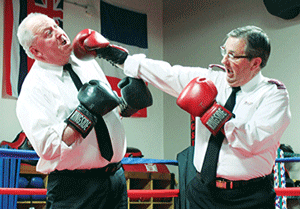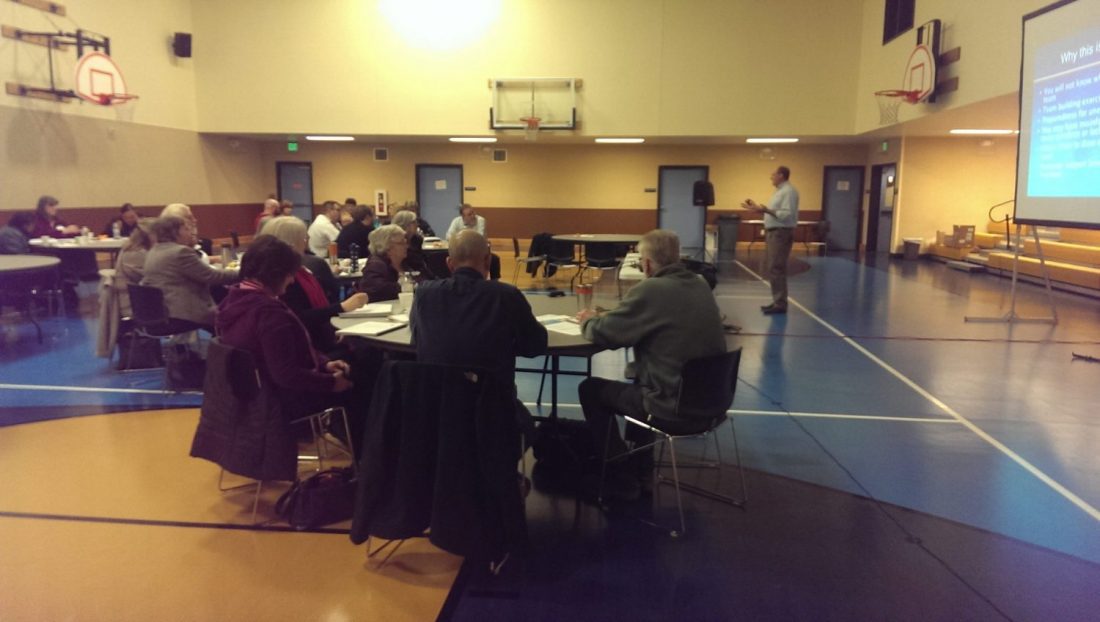Listen to this article
Listen to this article
Loading
Play
Pause
Options
0:00
-:--
1x
Playback Speed- 0.5
- 0.6
- 0.7
- 0.8
- 0.9
- 1
- 1.1
- 1.2
- 1.3
- 1.5
- 2
Audio Language
- English
- French
- German
- Italian
- Spanish
Open text
triple disaster -relief efforts in japan continue. army emergency service teams provide prompt, long-term help. by alma bahman. the salvation army is currently focusing on immediate response to the massive 9.0-magnitude earthquake—also known as the tohoku earthquake—followed by a tsunami that devastated japan march 11. international emergency services worker major raelton gibbs said the army is also preparing long-term plans. the three emergency service teams working in japan returned to territorial headquarters in tokyo to help develop these plans. the army will pay close attention to overlooked communities. “the work that has been done is commendable,” gibbs said in a press release. sendai, located on the coast and 80 miles away from the earthquake’s epicenter, sustained the most damage. the salvation army sent a team to sendai the night of the disaster to offer supplies and other necessities. the team also assessed the damage and determined other courses of action, according to a salvation army press release. the trip from tokyo took 20 hours as opposed to the usual six hours. tokyo is about 249 miles from sendai. commissioner makoto yoshida of the army’s japan territory was at territorial headquarters when the earthquake hit. “our building swayed tremendously. it was hard for us to keep standing and many of us were really frightened,” he said in a press release. on march 14, the army sent three emergency service relief teams to provide support. one team assisted people evacuated from areas most in danger from the damaged nuclear power plants. the army prepared hot drinks and meals in its mobile emergency canteen at sendai corps (the salvation army church). the second team distributed water, food, blankets, diapers and tissue boxes to evacuees in mito city, located approximately 11 miles from the tokai nuclear power plant. the third team went to aid evacuees from around the fukushima daiichi nuclear power plant. besides the damage done to buildings, halted public transit, disconnected phone lines, no no electricity, destroyed road and rail systems, a shortage of fuel and snow also hindered the teams from getting aid to those in need. most gas stations, markets and restaurants closed and some still remain out of service. the most troubling damage was to the fukushima daiichi nuclear power plant. relief teams are not permitted into these areas. the japanese government recognized the army’s work and permitted the teams to enter the disaster area and access roads that are closed off to the public. the army has served in sendai, koriyama, shirakawa, fukushima and mito city. support in the form of donations has come in from around the world. international headquarters (ihq) established a japan disaster fund appeal and as of march 21, donations to the salvation army equaled $3,742,000. over $3 million of these donations were made online followed by text-to-give, mail and phone. the korea territory began fundraising for relief efforts march 14 and will continue to do so for a month. the territory also arranged for 100,000 water bottles and 5,000 first-aid kits to be sent to japan by the k-water corporation and the korea disaster relief association, respectively. the salvation army has been present in japan since 1895. on march 19, the associated press reported, “a week after the disasters devastated the northeast coast, [japan’s] national police agency said… 7,348 people died and 10,947 were missing.”. see more at salvationist.org.
Open context player
Close context player
Plays:-Audio plays count
triple disaster -relief efforts in japan continue. army emergency service teams provide prompt, long-term help. by alma bahman. the salvation army is currently focusing on immediate response to the massive 9.0-magnitude earthquake—also known as the tohoku earthquake—followed by a tsunami that devastated japan march 11. international emergency services worker major raelton gibbs said the army is also preparing long-term plans. the three emergency service teams working in japan returned to territorial headquarters in tokyo to help develop these plans. the army will pay close attention to overlooked communities. “the work that has been done is commendable,” gibbs said in a press release. sendai, located on the coast and 80 miles away from the earthquake’s epicenter, sustained the most damage. the salvation army sent a team to sendai the night of the disaster to offer supplies and other necessities. the team also assessed the damage and determined other courses of action, according to a salvation army press release. the trip from tokyo took 20 hours as opposed to the usual six hours. tokyo is about 249 miles from sendai. commissioner makoto yoshida of the army’s japan territory was at territorial headquarters when the earthquake hit. “our building swayed tremendously. it was hard for us to keep standing and many of us were really frightened,” he said in a press release. on march 14, the army sent three emergency service relief teams to provide support. one team assisted people evacuated from areas most in danger from the damaged nuclear power plants. the army prepared hot drinks and meals in its mobile emergency canteen at sendai corps (the salvation army church). the second team distributed water, food, blankets, diapers and tissue boxes to evacuees in mito city, located approximately 11 miles from the tokai nuclear power plant. the third team went to aid evacuees from around the fukushima daiichi nuclear power plant. besides the damage done to buildings, halted public transit, disconnected phone lines, no no electricity, destroyed road and rail systems, a shortage of fuel and snow also hindered the teams from getting aid to those in need. most gas stations, markets and restaurants closed and some still remain out of service. the most troubling damage was to the fukushima daiichi nuclear power plant. relief teams are not permitted into these areas. the japanese government recognized the army’s work and permitted the teams to enter the disaster area and access roads that are closed off to the public. the army has served in sendai, koriyama, shirakawa, fukushima and mito city. support in the form of donations has come in from around the world. international headquarters (ihq) established a japan disaster fund appeal and as of march 21, donations to the salvation army equaled $3,742,000. over $3 million of these donations were made online followed by text-to-give, mail and phone. the korea territory began fundraising for relief efforts march 14 and will continue to do so for a month. the territory also arranged for 100,000 water bottles and 5,000 first-aid kits to be sent to japan by the k-water corporation and the korea disaster relief association, respectively. the salvation army has been present in japan since 1895. on march 19, the associated press reported, “a week after the disasters devastated the northeast coast, [japan’s] national police agency said… 7,348 people died and 10,947 were missing.”. see more at salvationist.org.
Listen to this article













